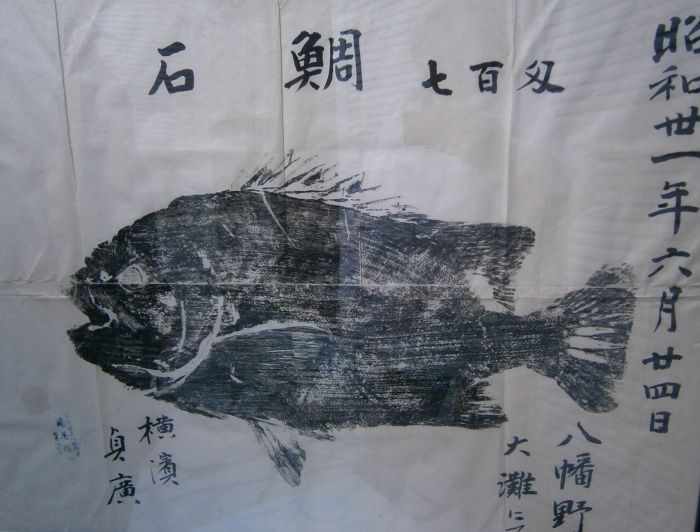A Japanese traditional art
The gyotaku (魚 拓, Gyo: fish and Taku: imprint, trace) is originally to take the imprint of a fish on a supple medium such as rice paper
The technique is part of a long Asian tradition, although the two oldest known examples of gyotaku only date back to 1862. It was originally used by Japanese fishermen to capture their catch, especially when It had an exceptional character.
The imprint was indicated: the name of the fish, its weight, the date of fishing, the weight and size of the fish, the name of the fisherman and the fishing ground.
This technique was also used in fishing competitions organized by samurai

This traditional art has evolved in time under the impetus of great Japanese masters with in particular the introduction of color and the invention of the indirect method while remaining a fairly confidential art.





